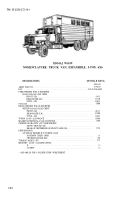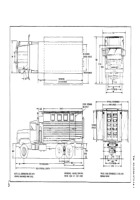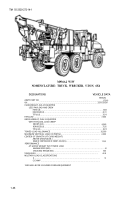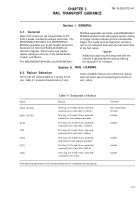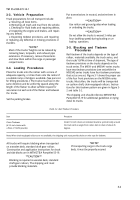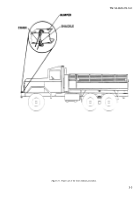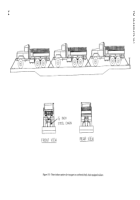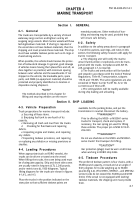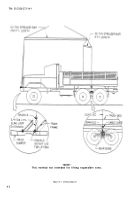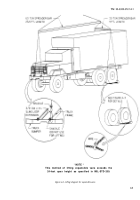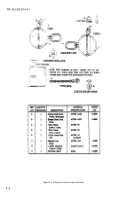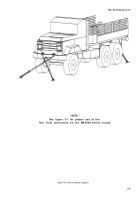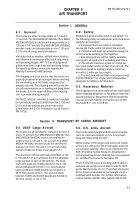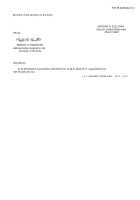TM-55-2320-272-14-1 - Page 54 of 65
CHAPTER 4
TM 55-2320-272-14-1
MARINE TRANSPORT
4-1. General
The trucks are transportable by a variety of inland
waterway cargo carriers and lighters and by all
Section I.
GENERAL
seagoing cargo vessels. Most marine vessels will have
lashing/tiedown materials. If shoring is required or
the vessel does not have tiedown materials, then the
shipping unit must provide these materials. The ship
must have suitable tiedown points such as D-rings or
chain lashing anchors.
When possible, the vehicle should receive the protec-
tion of below-deck stowage. In general, good stowage
of vehicles means having them placed fore and aft, as
close together as practical, with minimum spacing
between outer vehicles and the sweatboards. If not
shipped on the vehicle, the breakable parts, spare
parts, and OEM (on-equipment material) should be
protected and properly identified as to location or
disposition during shipment.
*NOTE*
The methods described in this chapter for
lifting and securing vehicles are the recom-
Section
4-3. Vehicle Preparation
mended procedures. Other methods of han-
dling and stowing may be used, provided they
will ensure safe delivery.
4-2. Safety
In addition to the safety precautions in paragraph
1-6 and the cautions, warnings, and notes in this
section, the following safety measures will apply for
marine transport.
a.
The shipping unit will notify the marine
vessel if ammunition or explosives are to be trans-
ported with the trucks. Compliance with AR 55-
228, paragraph 2-7, is required.
b.
The trucks and ammunition will be handled
and stowed in accordance with the Code of Federal
Regulations, Title 49, Transportation, subparts
176.76 and 176.905. The same regulations are also
contained in Water Carrier Tariff No. 32 or the
current issue of this tariff.
c.
Fire extinguishers will be readily available
during ship loading and unloading.
II. SHIP LOADING
Truck preparations for marine transport include:
a.
Securing all loose items.
b.
Emptying fuel tank to one-fourth of its
capacity.
c.
Removing all trash and mud from the trucks.
d.
Checking for fluid leaks and repairing
defects.
e.
Inspecting engine and brakes, and repairing
any defects.
f.
Inspecting tiedown provisions, and repairing
or replacing any defective or missing provisions or
shackles.
4-4. Loading Procedures
When appropriate (such as RORO vessels), the
trucks can be driven or towed onto the vessel.
When lifting the trucks, the crane being used must
be of adequate capacity. Ship and shore side cranes
are usually rated in long tons (LT), 2,240 pounds,
and/or metric tons (t), 1000 kilograms. Typical
lifting diagrams for the trucks are shown in figures
4-1,4-2, and 4-3.
Place the trucks in the position indicated on the
stow plan so that sufficient tiedown points are
available. Set the parking brake, and put the
transmission in neutral. Disconnect the battery.
***WARNING***
Prior to offering the M939- or M939A1-series
trucks for transport, check and replace, if
necessary, the rear spring pin used for lifting
these vehicles. The proper pin is NSN 5315-01-
206-2239.
***WARNING***
Do not use shackles on the M939- and M939A1-
series trucks’ front bumpers for lifting.
**CAUTION**
Ear protection (plugs) must be worn at all times
when working in RORO ship holds.
4-5. Tiedown Procedures
The preferred tiedown pattern is four chains, with a
35,000-pound capacity, crossed and at an angle of
thirty degrees for trucks weighing up to 50,000
pounds (fig 4-4). (The M939-, M939A1-, and M939A2-
series trucks do not exceed this 50,000-pound GVW
limit.) If the vessel is not equipped with lashing/
tiedown materials, the shipping unit must provide
them.
4-1
Back to Top


